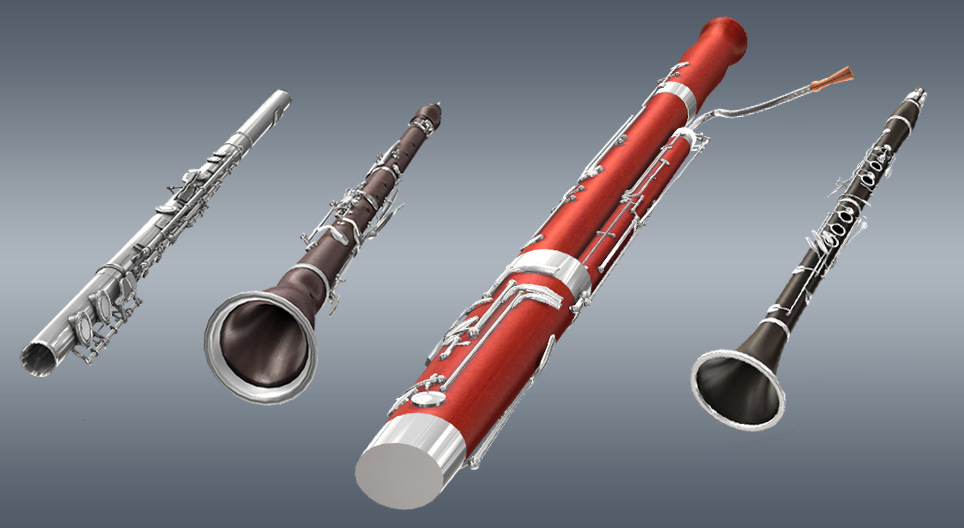The oldest instrument in the world is a 60,000-year-old bone flute made by Neanderthals. While modern instruments are far more sophisticated, this ancient flute shows that music has always been a vital part of our lives. If you’re interested in learning more about musical instruments, then you’ve come to the right place! We’ve created this handy guide that will walk you through the different types of woodwind instruments.
Be prepared to be blown away!
Table of Contents
What Is a Woodwind Instrument?
The woodwind family of instruments got their name as they were originally made from wood. Today, they can be made from metal or plastic too.
Woodwind instruments consist of a hollowed-out tube with holes in it. There is a mouthpiece at the top and an opening at the bottom.
You play the instruments by blowing air through the mouthpieces. You can change the pitch by opening or closing the holes in the tube with your fingers. Each hole you uncover will produce a higher note.
Flute
The flute is one of the easiest woodwind instruments to learn. The thin cylindrical tube is a little over 2 feet long and is formed from either silver, gold, or platinum.
Unlike other instruments in the woodwind category, the flute does not have a reed in the mouthpiece. Instead, you hold the flute horizontally and create sounds by blowing across a hole in the mouthpiece, much like blowing across the top of a bottle.
The piccolo is about half the size of a standard flute and plays the highest notes of the woodwind family.
Oboe
Usually made from wood or synthetic materials, the oboe is 2 feet long and has metal keys covering its holes. The mouthpiece contains a double-reed mechanism that vibrates and makes noise when you blow into it. The player uses both hands to press down on the keys to change the pitch.
The oboe is capable of producing a wide range of pitches and is often used in orchestral solos.
The English horn is very similar to an oboe. Slightly longer and wider, the bottom of an English horn extends into a rounded bell shape. This helps to create a warmer, lower-pitched sound.
Clarinet
Similar in appearance to the oboe, the clarinet is a straight cylinder with a flared end. The pitch is changed by pressing down on metal keys, but, unlike the oboe, the mouthpiece contains one reed instead of two.
Clarinets are made from wood or plastic resin. They come in a range of sizes, with each size capable of producing a variety of sounds and pitches. The standard B-flat clarinet is a little over 2 feet long. The E-flat clarinet is about half this size and plays much higher notes.
Bassoon
The bassoon is a long wooden pipe with a double reed mouthpiece. The pipe itself is around 9 feet long, but it is doubled in half to make it easier to play.
The bassoon is one of the hardest woodwind instruments to learn because it has so many keys. Unlike other instruments in this category, the bassoon requires you to use all ten fingers. If you want to master the bassoon, or any other instrument in this class, consider taking Woodwinds Lessons from Sloan School of Music.
The contrabassoon is the largest instrument in the woodwind family. Longer and wider than a regular bassoon, the pipe doubles over twice to allow the player to hold it. allow the player to hold it. Click here to learn more about the bassoon .
Now You Know the Different Types of Woodwind Instruments
Each of the different types of woodwind instruments creates a uniquely beautiful sound. With a little perseverance, learning how to play the flute, oboe, clarinet, or bassoon is sure to be a satisfying experience.
If this article struck a chord with you, browse through the rest of our site for more inspirational content.











